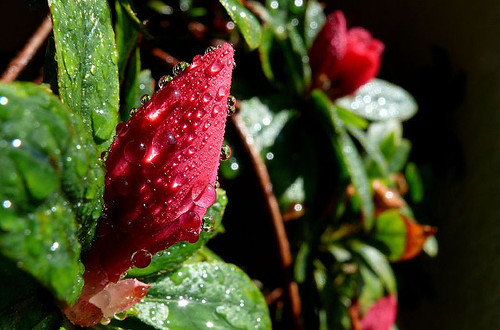by Michelle Sutton-Kerchner
It’s easy to sweat this time of year. A quick chat on the front lawn can lead to those little beads forming. Perspiration works hard for your body. Here are top reasons to break out in a sweat …
Sweating can be uncomfortable. It makes a great excuse to avoid physical activity during high temperatures. Are you the person who loathes even a walk to the mailbox on a humid, 90-degree day? Overcome your sweat-phobia. With these facts, you will be proud to glisten with evidence of your body’s work.
History Tells Us
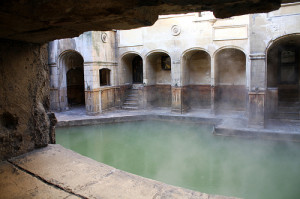
The ancient baths of Rome, with their picturesque steam rising in a room dedicated to soaks, nod toward our ancestors’ belief in “sweating it out.” Such baths and saunas, which raised body temperature enough to produce sweat, were thought to promote good health. We continue with this theory today, using such amenities as a treat at a spa or a luxury at home. In the modern world, studies lend credibility to this theory. They also indicate sweat’s potential to beautify and help with weight loss.
The Facts
Two types of sweat glands exist: eccrine and apocrine. Eccrine glands are located over most of the body and open directly onto the skin’s surface. Their purpose is to regulate body temperature. When body temperature rises, the nervous system stimulates these glands to release perspiration, which contains water, sodium, and other substances. The water in this concoction evaporates on the skin’s surface to cool the body.
Apocrine glands empty onto the skin via hair follicles. They are found mainly in the underarm and groin regions. Stress, anxiety, and fluctuating hormones trigger these glands to contract and release perspiration, which contains water, protein, fatty acids, and other substances.
Both types of perspiration mix on the skin where natural bacteria causes the apocrine solution to break down and release body odor. Hence, the need for deodorant under the arm rather than all over.
Cleanse
Sweating associated with vigorous workouts is believed to help remove toxins from the body. Some health experts believe a hearty sweat session can rid the system of alcohol, cholesterol, and excess salt. It can take kidneys up to 24 hours to remove these harmful substances. Other toxins, including mercury and lead, are efficiently removed from the body through sweat. Think of it as detox without the weird juice concoctions. Research proves as much as 30 percent of bodily waste is removed via sweat.
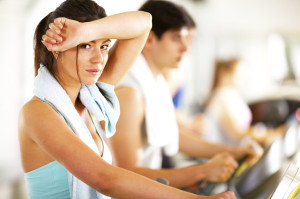
As you sweat out salt, you reduce risk of kidney stones. Removing salt from the body prevents it from sticking to other substances found in urine, which is how kidney stones form. The bone-building power of workouts helps eliminate need for calcium supplements, which are sometimes considered related to kidney stone formation. Rid yourself of the bad (excess salt) while maintaining the good (strong bones).
Sweating also clears the pores. Without clogs, the skin’s condition is less conducive for producing pimples. Be sure to wash off after sweating to avoid negating this benefit. Immediately after a workout, thoroughly cleanse skin to remove toxins from sweat and oils released while sweating.
Everyone is exposed to chemicals throughout the day. A polluted environment, processed foods, and cleaning products are a few of the toxins with which we regularly come in contact. Sweating provides an ongoing outlet for these nuisances before they interfere with your health. Release the toxins!
Weight Loss
You can sweat off those extra pounds. Water weight is released during every sweat session, delivering instant gratification. Raised body temperature is also thought to breakdown cellulite. Combined with the activity required to break into a sweat, you’re on your way to melting that ice cream sundae.
Consider sweat the body’s indicator of calories being burned. Heart rate is elevated and muscles are pumping. The increase in blood volume demanded during exercise helps perspiration production (and improves heart health). This boost in plasma volume caused by exercise encourages a good, healthy sweat. It’s the body’s way of saying “good job” during your workout.
Ache Reliever
An achy joint or a tight muscle often can be alleviated by the body’s built-in heating pad. The activity that produces sweat, warms muscles and joints, which reduces stiffness and increases flexibility. If sweat is exercise induced, it may signal the release of feel-good hormones in the brain. Before you reach for an over-the-counter remedy, break into a sweat. It might do the job, and then some!
Sweat Your Way to a Better Mindset
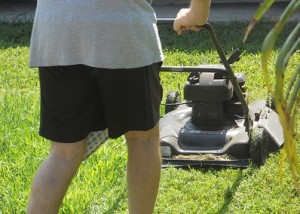
Sweating itself may not put you in a good mood. It often sends us to a cool shower. However, the many tasks that lead to a healthy sweat usually do. It’s the reward of a workout; the outcome of a hot day picnicking under the sun; the labor of love for gardening, working in the garage, or playing with children on the playground.
Endorphins and other chemicals released during a sweat session have a positive effect on mood and stress level. Muscles become relaxed and more stretchable when the body is warm. Hence, the required pre-workout warm-up.
Sweating in the steamy environment of a hot tub or sauna, or through a vigorous workout, can clear sinuses. Breathing more freely and deeply better fuels the body with oxygen. It also allows the easier cleansing breaths essential to stress relief throughout the day.
Research suggests there are temperature-sensitive neural circuits to specific regions in the brain. These are thought to play a significant role in regulating mood. No wonder the craze over hot yoga! Yoga’s readily acknowledged mood-boosting qualities possibly are magnified in the heat.
If not up for exercising in high temps, bring on the heat yourself with your choice of workouts. Through perspiration, your body regulates its temperature to prevent overheating. The process of sweat evaporating from the skin is the actual cooling function.
Aside from strengthening the immune system through exercise, the resulting sweat may also help prevent illnesses. Human perspiration contains a naturally occurring antimicrobial peptide, proven to fight some dangerous pathogens. Another reason to smile through your next sweat session.
Sweat Safely
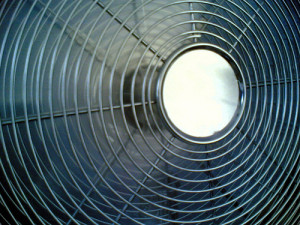
Sweat works as the body’s thermostat. The body sweats continuously, though you may not realize it. Moisture is released over almost the entire skin to keep you comfy at your normal temp of 98.6, or thereabout. To accomplish this on a hot day, you may sweat without lifting a finger.
To help the body’s perspiration system work efficiently, allow sweat to perform its cooling function. It needs to evaporate on the skin to cool down the body. Follow these guidelines:
- Wear sweat-wicking fabrics. Heavy layers or fleece sweatsuits can trap body heat.
- Be cautious when exercising in high humidity. Air that is heavy with moisture can interfere with sweat’s evaporation.
- Exercise in environments where air is well circulated. Use a fan, especially if ventilation is poor.
- Decrease intensity if you feel overheated or are sweating profusely. Sweat that drips from the body cannot effectively cool.
- Avoid wiping away sweat. If perspiration is that intense, take a rest.
If these perks don’t motivate you to work up a sweat, know that sweating can burn 300 calories an hour. Get moving and feel the heat!
Sources
“Sweat: 7 Reasons It Does a Body Good,” by Ayren Jackson-Cannady at www.fitnessmagazine.com.
www.livestrong.com
www.mayoclinic.com
Image Credits
Flower buds (introductory photo): www.flickr.com/photos/_lev_/489837674/
Roman baths: www.flickr.com/photos/cyesuta/4361332023/
Mowing: www.flickr.com/photos/osseous/5913692846
Fan: www.flickr.com/photos/comedynose/3678528721/
 Fitness & Wellness News Your Source for Fitness News, Wellness News, Health News, and Nutrition News!
Fitness & Wellness News Your Source for Fitness News, Wellness News, Health News, and Nutrition News!
